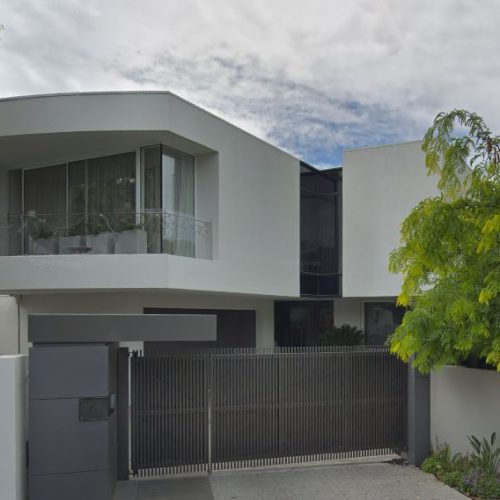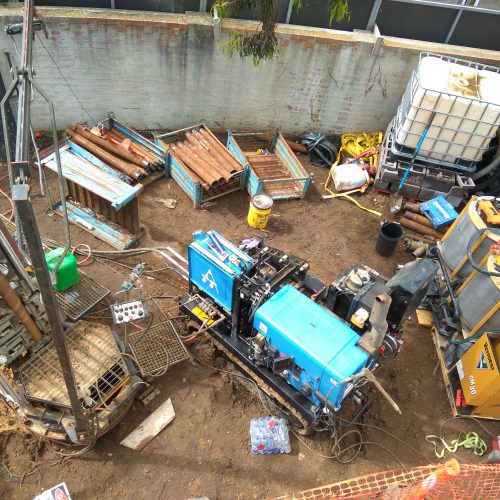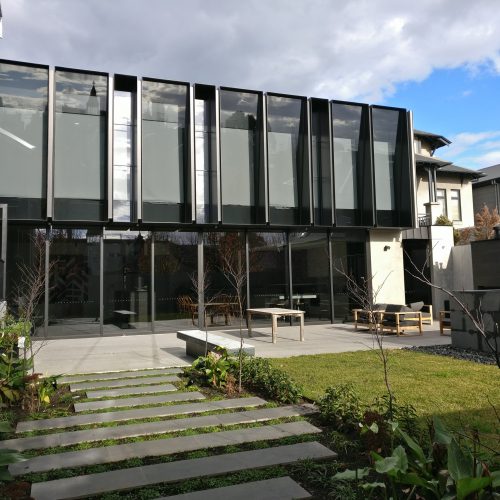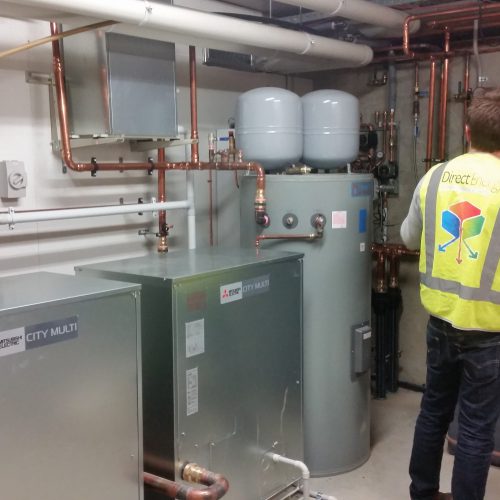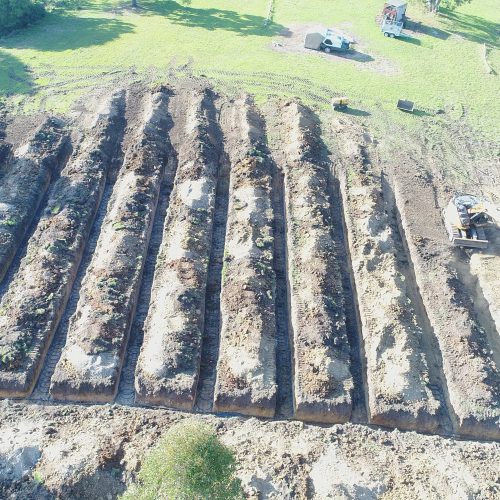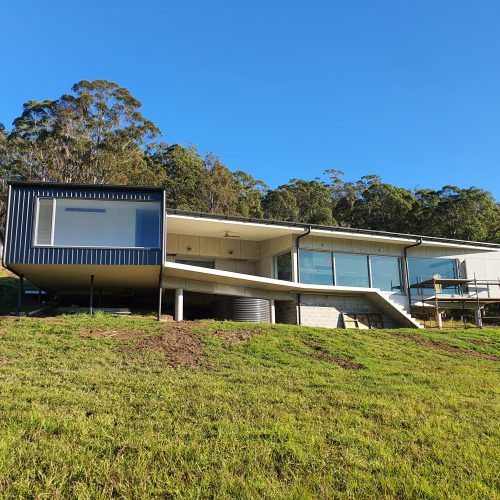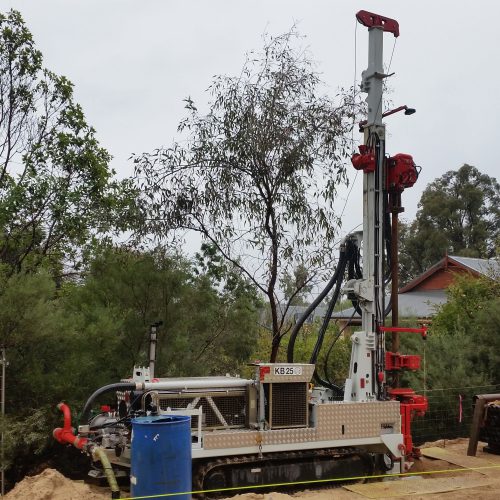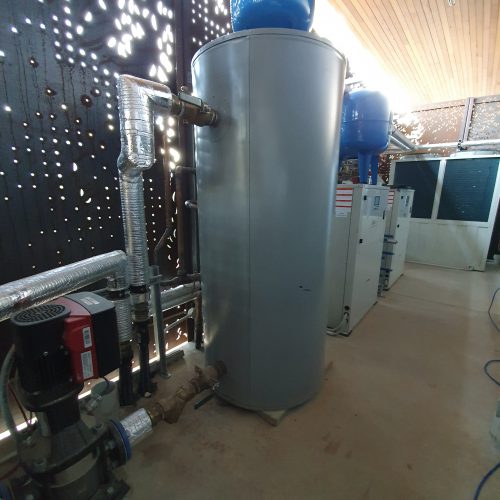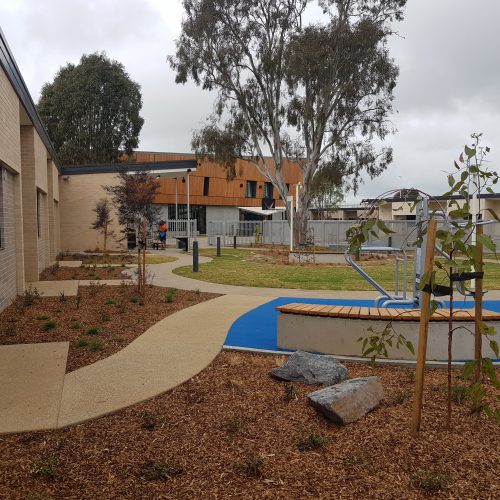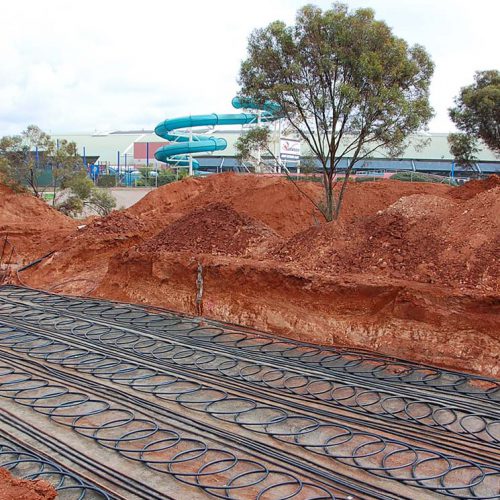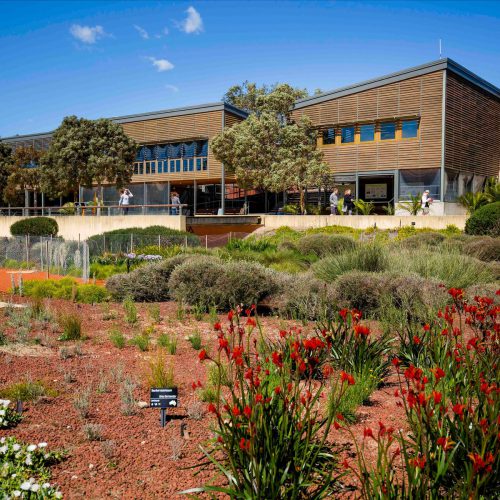Geothermal Heating & Cooling
Geothermal heating and cooling systems use Ground Source Heat Pumps (GSHP) to heat and cool water and air. They work very similarly to standard air conditioning systems and hot water systems that operate from electricity, without the need for natural gas. Energy savings are introduced in a range of 30% to 60% less than the equivalent air source heat pumps (ASHP) or gas heating systems. For this reason, geothermal is becoming increasingly popular for those who want to eliminate gas usage and lower carbon emissions.
The key to geothermal system use in Australia is to use the systems as base load heating & cooling and combine with other Heating Ventilation & Air Conditioning technologies. At Direct Energy we specialise in the optimal use of geothermal technologies only in situations that it is effective and utilised enough such that it makes financial sense.
There are many approaches to geothermal systems, but only one approach that provides optimal cost effectiveness and optimal efficiency. Applying sound engineering principles to designing and installing geothermal and HVAC systems is necessary to achieve a satisfying and long-lasting end result.
Geothermal systems work using water as a heat transfer medium to transfer heat from water or the ground (via water in pipes) into a building using circulation pumps. Ground temperatures are ‘captured’ by the water and transferred into a Ground Source Heat Pump (GSHP) via a heat exchanger (often inside the heat pump). The GSHP then produces water, typically in the range of 7 to 50 degrees Celsius, for cooling and heating respectively. Higher or lower temperatures can be reached at the expense of efficiency, as with most heating & cooling systems.
These temperatures can provide space heating and cooling (air conditioning) and hot or chilled water delivery inside a home, office, building or district.
Lower and higher temperatures can be reached, depending on the requirements of the building or type of application. Different types of heat pumps are designed for different temperatures demanded by a building’s mechanical system.
We primarily utilise four different sources of geothermal energy systems. All circulate water in one way or another. As illustrated in the infographic below, these are:
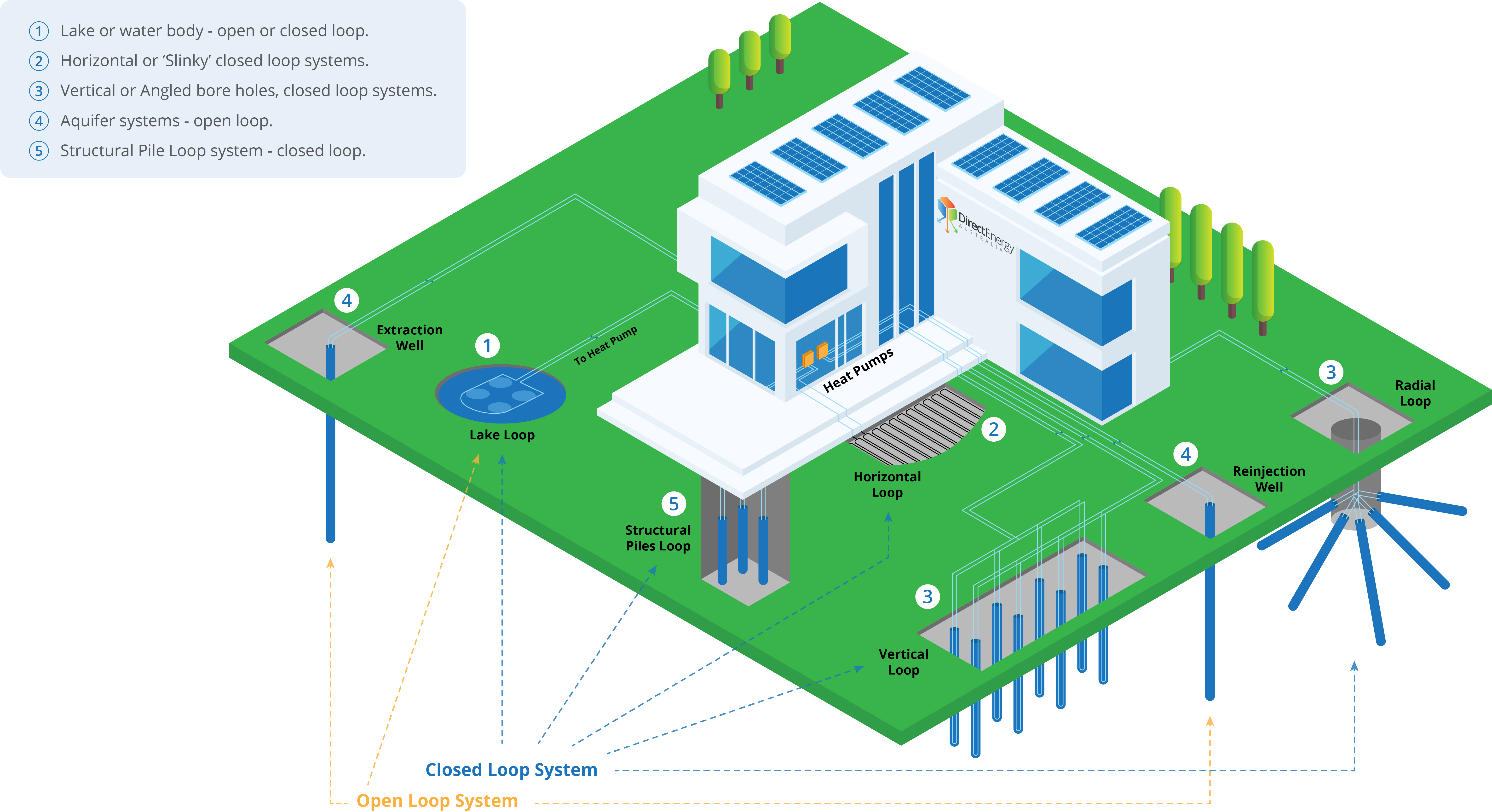

Residential & Commercial Precincts
Residential & commercial precincts, including education campuses, retail & commercial buildings & mixed-use developments, offer opportunities to combine two or more different types of geothermal systems. In combination, multiple loop arrays, lakes & aquifers can form a large, connected geothermal network that services both houses and local businesses/commercial buildings.
A new era of precinct design is emerging that focuses on the pathway to Net Zero. We offer preliminary high-level review through to detailed precinct energy design. Typically, this involves coupling geothermal systems with other technologies to produce optimal low-energy-using large-scale networks. Designs can include solar and battery storage systems, enhanced low energy mechanical design and innovative controls. Our focus is creating a simple operational platform and low maintenance systems with exceptional monitoring & backup capability.
Specialising in the design, coordination, installation, funding and management of these systems is what we do.
See St Hilaire District Energy System and Rivergum Residential Treatment Centre Project Summaries.
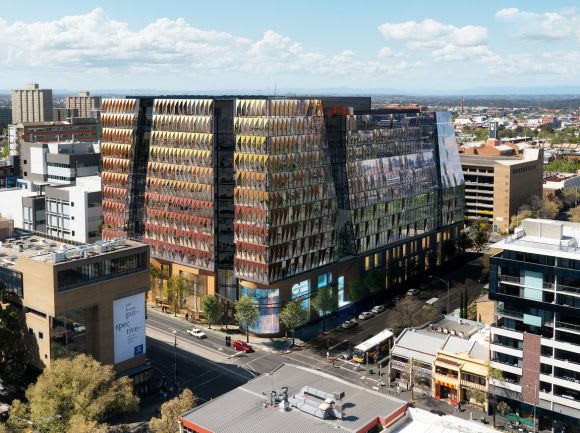
Commercial
In commercial buildings we assess the land area available for vertical and horizontal ground loops and assess geological formations to determine capacity constraints. Sometimes we have aquifers (shallow and deep) from which we can draw geothermal heat, but this is rare. Lakes can be in proximity and we use these at times when available, as these are an excellent low cost entry into geothermal heating and cooling.
Commercial projects usually have tight financial constraints. We work to integrate geothermal into a project’s mechanical design, seeking optimisation of the geothermal capacity. In Australia, there are often hybrid solutions that see geothermal systems coupled with other complimentary technologies.
Enabling geothermal via accurate and bankable financial modelling is one of our core specialities.
See a Project Summary Royal Botanical Gardens in Cranbourne. The most common are vertical loops, for which radial drilling or vertical drilling is selected depending on accessible land areas. See Melbourne Connect, University of Melbourne, CBD campus in Melbourne.
Residential
In Residential buildings, we apply closed loop geothermal systems for individual homes: typically vertical loops due to confined spaces.
We utilise both vertical and radial drilling (see Geothermal Drilling). Horizontal loops are advised in large properties that have 2000m2 of land that has few rocks with accessible ground. See our Quarrabolong Project for an example of a system supporting a stand-alone power system off grid.
The combination of the right type of heat pump(s), a refined mechanical services design and engineer-certified geothermal drilling will offer a refined quality finish to any high-end home. Air conditioning via underfloor and/or ducted heating/cooling systems and hot water can be supplied from a single, very efficient heat pump. Pool and spa heating can also be added, without any additional equipment. The new standard in heat pumps provides for a high technology addition to any contemporary home design.
The lower cost of energy can be substantial, with bills reducing by up to 40% on overall house energy expenditure.

